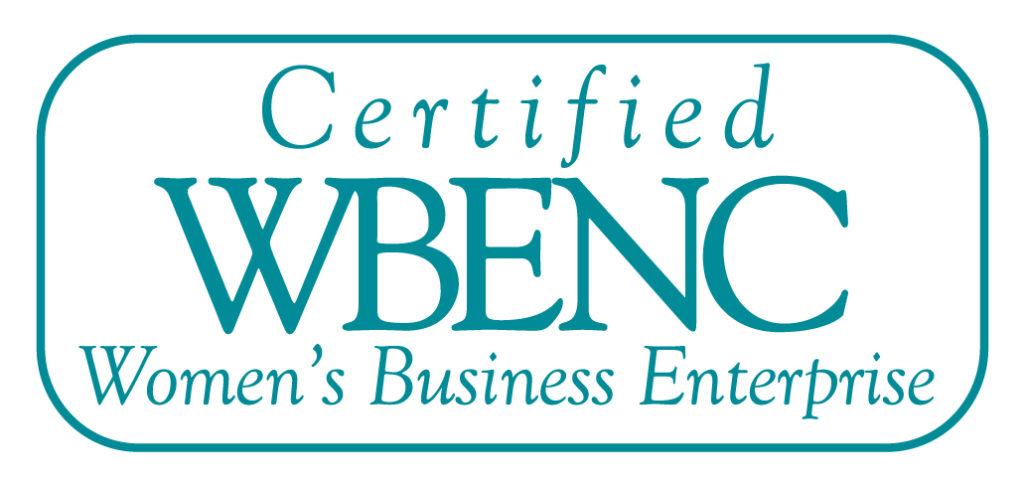Paying attention to environmental, social and governance (ESG) issues is becoming increasingly critical for companies across all industries and geographies. Employees, consumers, governments, and communities are holding organizations accountable for paying attention to ESG, and it is becoming essential for these organizations to not only have an ESG strategy but to also be able to measure and report on how they are doing with it.
In March, the SEC released a proposal that would require publicly traded companies to include certain climate-related disclosures in their registration statements and periodic reports, including information about climate-related risks that are reasonably likely to have a material impact on their business, results of operations, or financial condition and certain climate-related financial statement metrics in a note to their audited financial statements. The required information would also include disclosure of a registrant’s greenhouse gas emissions.
Throughout 2021, the importance of ESG initiatives proved to be even greater than many had expected and are now a top organizational priority for 2022. Many organizations have launched or announced a new company mission, vision and purpose in the last 18 months due to ESG considerations.
A growing number of companies are integrating ESG into their business strategy. According to JJ Davis, Chief Corporate Affairs Officer at Dell Technologies, Dell’s ESG Strategy is embedded in their corporate strategy and vision, to be the most essential technology company for the data era. She explains that ESG is a part of the way they do business now. The message is loud and clear, align your strategy to sustainability targets and reap monetary rewards.
But before a company can embrace an ESG Strategy, one needs to know exactly what it is. And in order to understand ESG, it is important to first understand Sustainability.
What is Sustainability?
In the broadest sense, sustainability refers to the ability to maintain or support a process continuously over time. In business, sustainability refers to doing business without negatively impacting the environment, community, or society as a whole. It seeks to prevent the depletion of natural or physical resources so that they will remain available for the long term. Sustainable policies emphasize the future effect of any given policy or business practice on humans, ecosystems, and the wider economy.
The concept often corresponds to the belief that without major changes to the way the planet is run, it will suffer irreparable damage. Sustainable business strategies are unique to each organization as they are tied to larger business goals and organizational values. Some examples of sustainability goals are:
- Using sustainable materials in the manufacturing process
- Optimizing supply chains to reduce greenhouse emissions
- Relying on renewable energy sources to power facilities
- Sponsoring an event in the local community
What is ESG?
Environmental, Social, and Governance (ESG) refers to criteria and strategies that assess an organization’s ability to effectively manage its environmental and social impacts. In other words, to measure its sustainability goals and targets. Companies that adhere to ESG standards agree to conduct themselves ethically in those three areas and develop a range of ESG strategies, tactics and solutions. The following represents some topics that are considered in each category:
Environmental – preservation of our natural world
- Climate change
- Carbon Emission Reduction
- Water Pollution and water scarcity
- Air pollution
- Deforestation
- Greenhouse Gas emissions
Social – Consideration of humans and our interdependencies
- Employee relations and diversity
- Working conditions
- Community Relations
- Mental Health
Governance -How a corporation polices itself
- Board of Directors and its makeup
- Executive compensation guidelines
- Political contributions and lobbying
- Hiring and onboarding best practices
- Metrics on Diversity, Equity and Inclusion
The 2021 United Nations Climate Change Conference, commonly referred to as COP26, was held in Glasgow Scotland. The goal was to secure global net zero by mid-century and keep a maximum of 1.5 degrees Celsius of warming within reach. Net Zero means total emissions are equal to or less than the emissions removed from the environment. To reach this goal the hope is to accelerate the phase out of coal, curtail deforestation, speed up the switch to electric vehicles and encourage investment in renewables.
Other goals included adapting to protect communities and natural habitats, and securing at least $110 Billion in climate finance per year. A board was also created, the International Sustainability Standards Board (ISSB). The ISSB goals are to develop a new global baseline of sustainability reporting and disclosure standards. Nations will convene again in Egypt in November 2022 for COP27. Participating countries expect to complete more robust accounting and reporting frameworks for the corporate sector before the next summit.
Many corporations today have already put in place ESG and sustainability programs with clear targets and KPI’s. Some industry leaders have already emerged. Apple, Dell, Amazon, Google and other large technology companies have made pledges to reduce their carbon footprint and improve other sustainability initiatives.
- Apple is committed to being 100% carbon neutral in their entire business including its supply chain and product life cycle by 2030
- Dell Technologies’ goal is to reduce their carbon emissions by 50% by 2030
- JetBlue is offsetting its emissions which in turn are invested into forestry, landfill gas capture, solar and wind projects
- Salesforce has achieved net-zero greenhouse emissions globally and delivers a carbon-neutral cloud, Salesforce Net Zero Cloud. Salesforce is a clear leader in this field
- In February 2022, Salesforce announced a new partnership with JetBlue for Sustainable Aviation
- In 2017, Google achieved 100% renewable energy by buying only electricity produced from renewable power
- Adidas has created a greener supply chain and pledged that by 2025 nine out of 10 Adidas articles will be made from Sustainable materials
- Cisco’s products are designed using up to 85% clean electricity from renewable resources.
- The brand successfully reduced 60% of both its Scope 1 and 2 direct and indirect emissions and hopes to reach net zero by 2040.
The Role of IT in Sustainability:
CIO’s have emerged as key agents in advancing companies’ sustainability programs. According to a recent Harris Poll of executives:
- 91% of respondents believe that technology makes it possible for their organization to be more sustainable
- 78% cite technology as critical for their future sustainability efforts attesting that it helps transform operations, socialize their initiatives more broadly, and measure and report the impact of their efforts
Here are some examples of where IT is playing a critical role in achieving sustainability objectives:
- Improving Cloud and Data Centers Sustainability:
According to the International Energy Agency, data centers account for 1% of global electricity. Data center operators are working to drive down energy consumption to advance sustainability and companies are undertaking several initiatives to make their data centers more sustainable. Offloading data to the cloud is another way organizations are embracing green data storage. By turning to the cloud, a company can transfer storage-related energy consumption to its public cloud provider. In turn, these cloud service providers are employing multiple strategies to attain greener data centers:
- Using renewable energy including wind or solar along with large battery banks for storing the collected energy
- Using energy more efficiently in its data centers, for example locating the data center in a cold climate, underground, or even on the ocean floor
- Using Artificial Intelligence (AI) or machine learning to optimize energy use
- Improving air circulation or implementing water cooling systems to handle equipment generated heat
- Shifting workloads to different times to optimize energy use
Virtually all major cloud services companies have committed to adopting green operations. Google promised that its Google Cloud service will run entirely on solar and wind energy by 2030.
Bank of America has reduced data center greenhouse gas emissions by 52% through energy reduction, space consolidation, and greening of the utility grid. They have also reduced their water use by 57% by moving to modular data halls and replacing evaporative coolers with air-cooled chillers.
- Measuring and tracking data
Data has become the most important tool for analyzing business sustainability. With the increasing rate of digital transformation in industries, companies are now more capable of analyzing data faster and keeping it relevant. Using Key Performance Indicators (KPI’s) businesses can measure aggregated data against business targets to determine the success of their strategy implementation. There are challenges, however, as there is an absence of standardization of metrics, KPI’s, and targets. The other issue is that many companies still use manual or semi-automated processes for their ESG reporting.
One of the most common goals of corporations is to reduce their carbon footprint. According to the EPA, transportation and electricity produce over half of the greenhouse gas emissions (GHG) in the US. If your goal is to reduce your carbon footprint, you have to look at your entire business and emissions scopes, often referred to as “scope emissions” or “scopes 1, 2, and 3”. This will help you to break down your emissions sources and behaviors. Scope 1, 2, and 3 emissions are defined as follows:
- Scope 1: direct emissions from sources owned or controlled by the company-like buildings, vehicles and equipment
- Scope 2: indirect emissions from purchased electricity, steam, heat, and cooling
- Scope 3: all other emissions with a company’s activities like business travel, employee commuting, waste and waste disposal, transportation tied to suppliers and customers
Many cloud providers now offer carbon emissions tracking tools. By measuring Scopes 1,2 and 3 of emissions, organizations can assess how their products or services are impacting climate change. The global carbon accounting software sector attracted $365 million of venture capital funding last year, more than five times the $63 million for 2020 according to research from PitchBook Data Inc.
Some major cloud providers that are offering carbon emissions tracking tools:
- Amazon introduced a carbon tracking tool for Amazon Web Services’ users that estimates a customer’s emissions based on where they are and the share of green electricity powering the data centers they are using
- Alphabet Inc’s Google Cloud and Microsoft Corporation’s Azure cloud platform started offering their customers carbon tracking tools in October 2021 and January 2020
- As mentioned previously, Salesforce offers its Net Zero Cloud, a sustainability management platform designed to help organizations manage their environmental footprint and track their progress to net zero.
Notch Above Consulting is playing a major role at one of our clients by assisting them in measuring their sustainability goals of reducing their scope 1 and 2 emissions by 30% by 2026, and their scope 3 emissions for business travel by 35% per employee over the same time period. Everything from business travel, costs of flights, and using airlines and hotels that have committed to their own sustainability goals are being examined. In order to measure some of the critical KPI’s, Notch Above was able to bring many manual processes and decentralized data to one place and then create a user-friendly dashboard for executives to be able to clearly see where they are in terms of their sustainability goals and also to create actionable data.
Some other common KPI’s that are being measured at organizations are:
- Consumption of Energy
- Supply Chain Miles
- Waste and Reduction and recycling rates
- Social impact
3. Artificial Intelligence (AI)
There has been a lot of talk and hype around AI and its role in helping companies achieve their sustainability goals. AI tools often perform tasks better than humans and can complete jobs quickly and with relatively few errors.
- Cirrus Nexus recently launched an AI tool to help companies measure and reduce carbon emissions from their cloud operations. The tool, TrueCarbon, analyzes publicly available info on data center energy consumption and other third-party data to help customers gauge their carbon emissions. It also makes recommendations to help customers meet targets around emissions reduction.
- Machine learning algorithms are being integrated into analytics and customer relationship management (CRM) platforms to uncover information on how to better serve customers.
- Chatbots have been incorporated into websites to provide immediate service to customers.
One of Notch Above Consulting’s clients, a global manufacturer that delivers innovative equipment and components, software, digital solution and support services, recently launched an AI solution to assist in the monitoring of their fuel and gas stations. The solution can detect a tiny fuel leak that would not have been possible without the AI tool and has saved their customers massive amounts of time and money.
Conclusion
The evidence is clear, organizations are facing internal and external pressures to drive sustainability in all aspects of their business. Sustainability can drive powerful business transformation and ESG initiatives have become a top organizational priority for 2022. IT plays a key role in helping companies to achieve their sustainability goals and will continue to be critical going forward as executives want more measurement around sustainability efforts.
The time to act is now. Our future depends on it, governments are going to mandate it, investors are demanding it, consumers want to work at sustainable companies, organizations want to do business with or hire from sustainable companies and it is simply put, the right thing to do for our planet!





